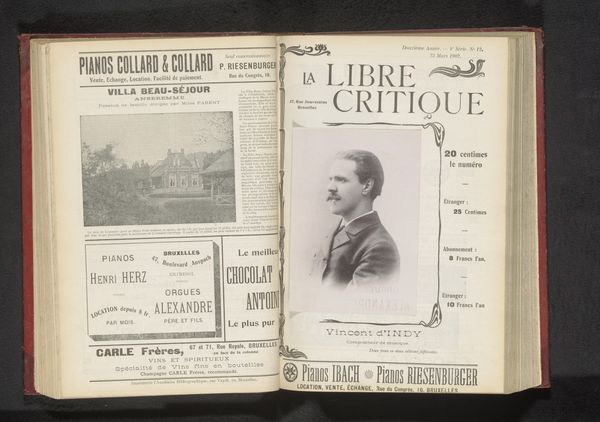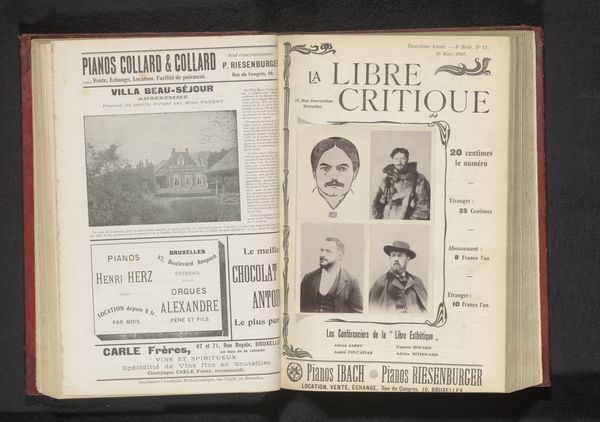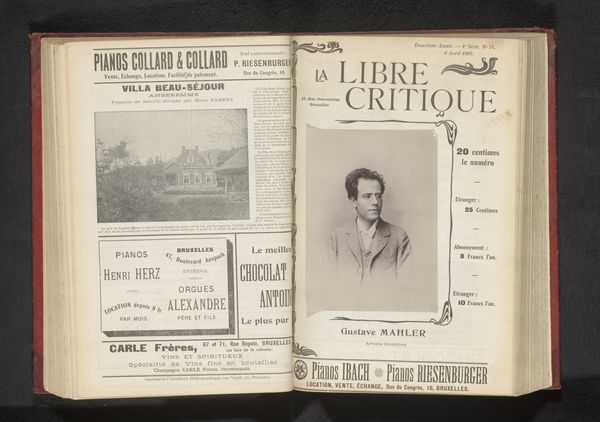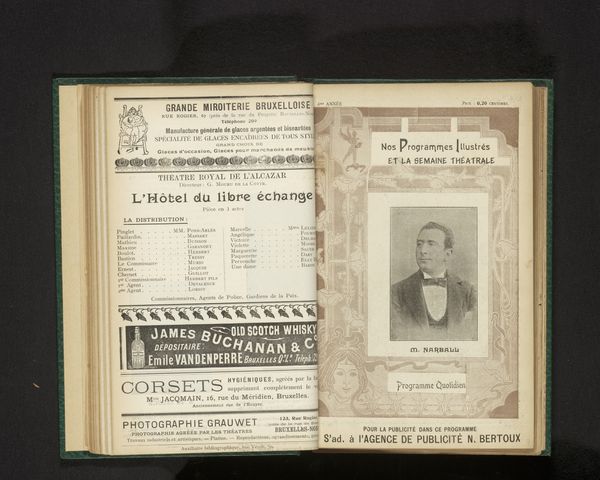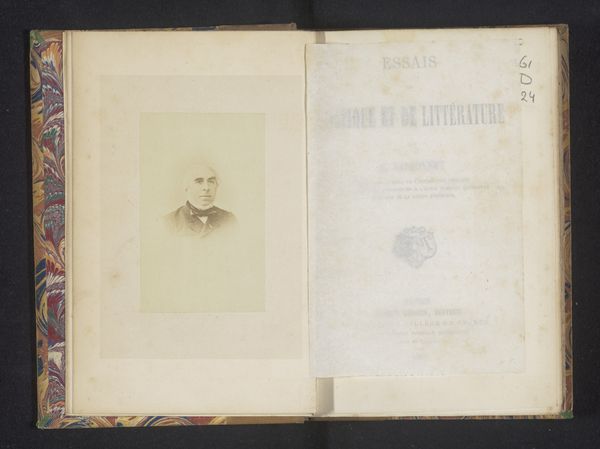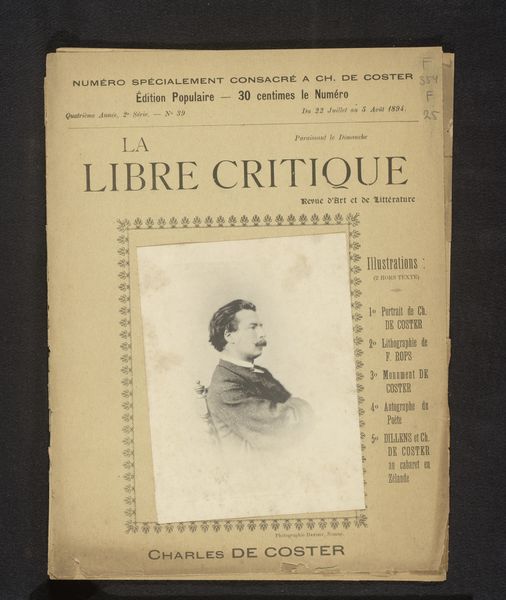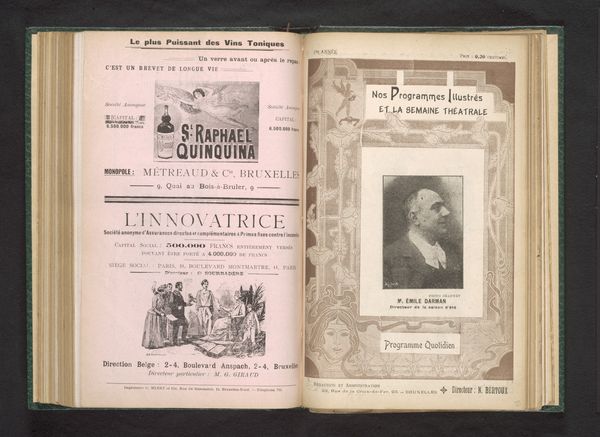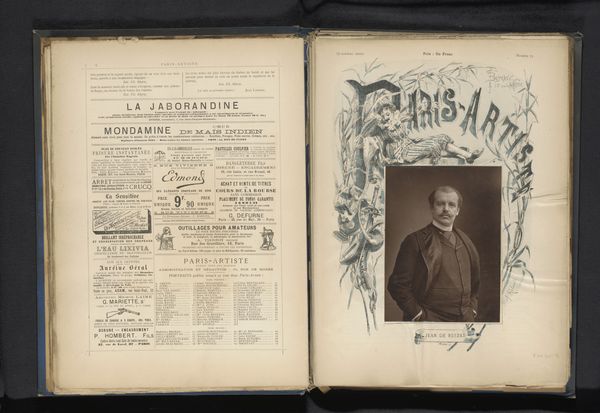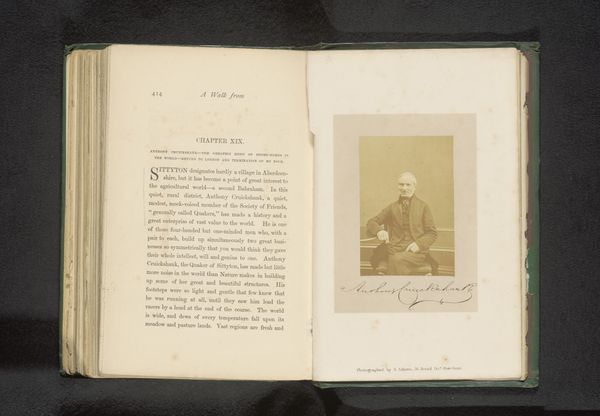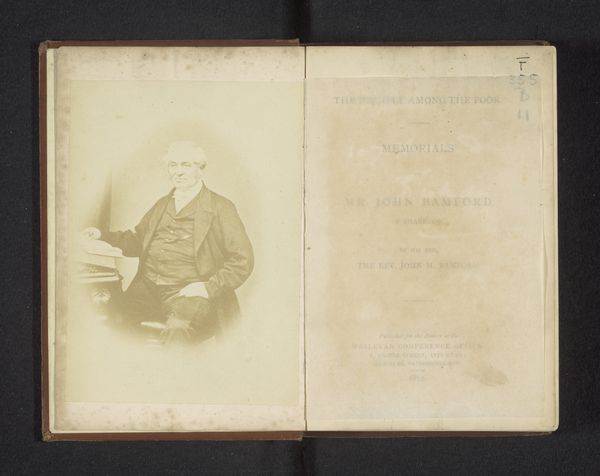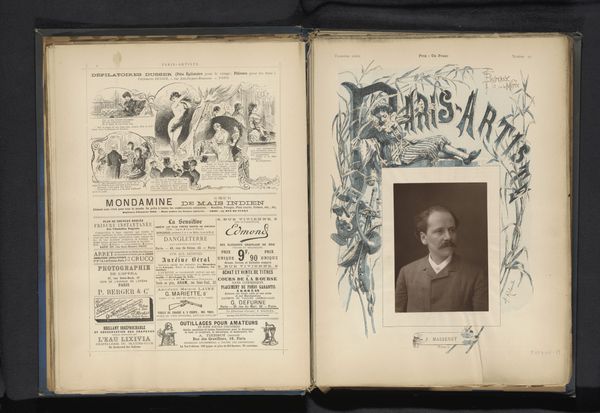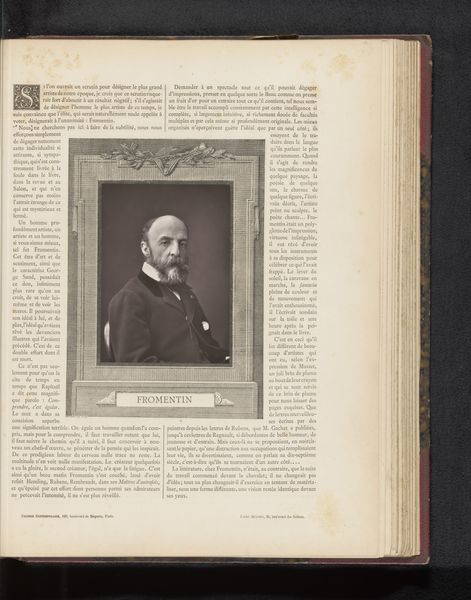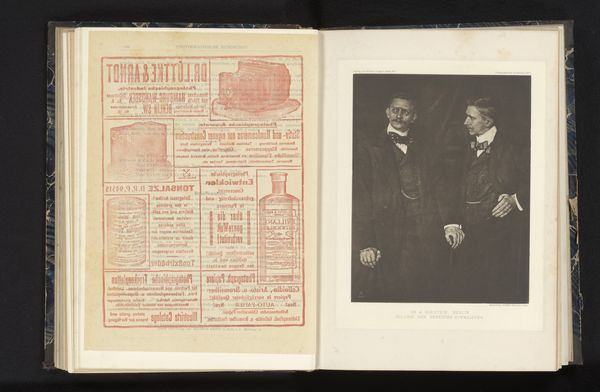
print, paper, photography
#
portrait
#
art-nouveau
# print
#
paper
#
photography
#
modernism
#
realism
Dimensions: height 270 mm, width 182 mm, thickness 35 mm
Copyright: Rijks Museum: Open Domain
Curator: This is "La libre critique," dating back to 1902. What strikes you first about this print currently housed at the Rijksmuseum? Editor: Immediately, I’m drawn to its material form – a bound book, open to reveal a photograph embedded in the magazine layout. The contrast between the crisp photograph and the overlaid art nouveau typography highlights a negotiation between art and the burgeoning world of mass media and printed materials. Curator: Absolutely. "La libre critique" was a publication deeply embedded in the artistic and political debates of its time. The choice of photography here, a portrait of Edmond Picard, isn't just about representation; it's about leveraging his social and intellectual standing. He was a prominent lawyer and writer. Editor: So, the publication itself functioned as a vehicle for propagating ideas, using visual strategies to reinforce its critical voice? How did this particular format influence readership or perceptions of legitimacy? Curator: Consider the socio-political context. This was a period of significant upheaval, with questions of artistic freedom and political power at the forefront. The Art Nouveau design, intertwined with modern photographic reproduction, made it commercially viable. Its construction also positioned it as a cultural artifact of considerable weight in the art world and journalistic landscape. Editor: And who controlled its manufacture, circulation, and eventual consumption is central. The publishers of ‘La Libre Critique,’ they used a familiar form – the magazine – to spread and potentially democratize access to these intellectuals’ opinions. Were copies widely available? And did these mediums play a pivotal role in public perception? Curator: Exactly, and "La libre critique" sought a balance, attracting a literate but broad audience while showcasing artistic experimentation. In essence, this physical object is itself a record of how art, ideas, and socio-political forces converged. It reveals insights into both artistic expression and the dynamics of influence during that period. Editor: Right. Investigating its journey reveals complex decisions made regarding both dissemination and reception. Thanks to technological progress the masses had access. Curator: It really highlights the reciprocal exchange between culture, technique, and public imagination back then. Editor: Agreed, definitely some intriguing dynamics to explore.
Comments
No comments
Be the first to comment and join the conversation on the ultimate creative platform.
